What’s Location Marketing?
Published on November 09, 2018/Last edited on November 09, 2018/10 min read
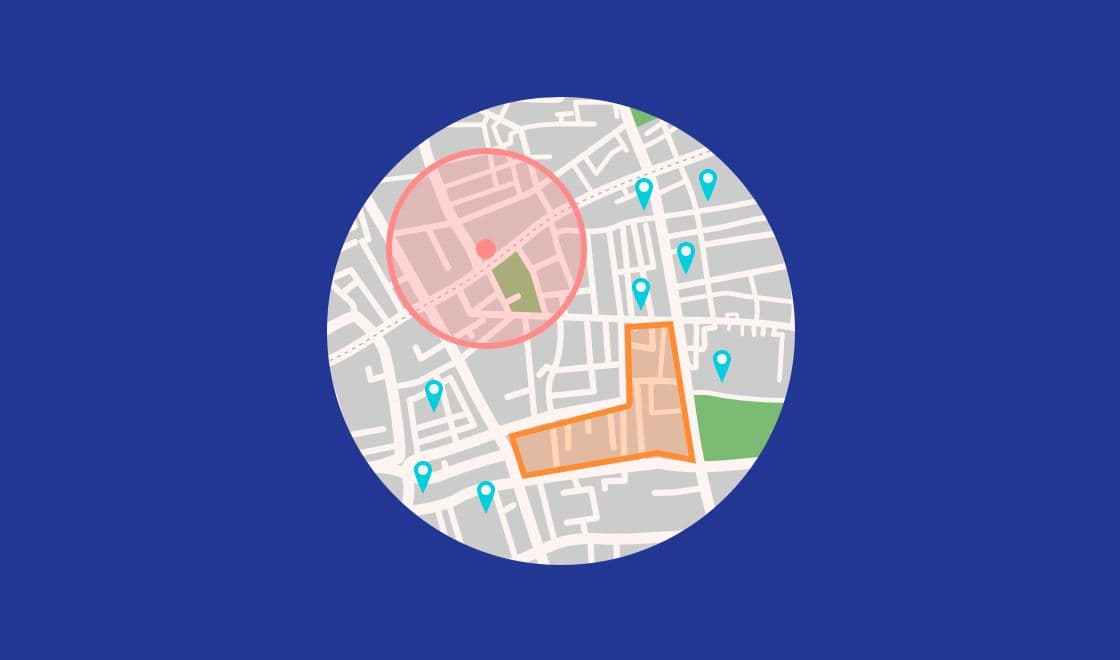

Namkyu Oh
Solutions Consultant at BrazeThere’s so much customer messaging out there right now—personally, I’ve already gotten 47 push notifications and 54 emails so far today, and it’s not even five o’clock. For companies trying to break through all that noise and actually connect with their users, the name of the game is relevancy.
If someone takes the time to open one of your emails or glance at one of your pushes, there’d better be something there that speaks to them. What that something is can differ. Maybe it’s that user’s name, or a mention of a product they’ve had their eye on. Or maybe—just maybe—it’s a message that resonates because it’s informed by an understanding of that user and where they’re physically located.
Call it smart. Call it engaging. Call it “location-based marketing.” That’s what I’m going to do. And while this strategy isn’t some big mystery, enough savvy marketers aren’t familiar with it that I think it’s worth taking a moment to dig in and explore its ins-and-outs. Join me?
What is location marketing?
Honestly, location marketing is simply the practice of incorporating a user’s physical location into how a brand interacts with them to provide a better overall customer experience. What that looks like for a given brand, a given campaign, or a given user can differ quite a lot (different data, different tools, different goals), but that central concept should be your north star: it’s not location marketing if your understanding of a user’s location doesn’t come into play.
So… why is location marketing a thing all of a sudden?
In a word? Mobile.
Before the rise of smartphones, the only real information marketers had about their customers’ locations was their mailing addresses—if that. But over the past decade and change, it’s become possible to gather nuanced, actionable information about mobile users’ locations and movements, with the right tools and permissions. That’s taken the idea of marketing based on people’s location and made it real and valuable.
All right, so what does it take to actually take advantage of location marketing?
In general, it’s useful to think about location marketing in terms of the tools you’re using to make it possible. A comprehensive list of tools would probably be overwhelming, but four common ones are:
- Geotargeting — Targeting customers for specific messaging campaigns based on their last known location
- Geofencing — Triggering outreach when a given user enters, leaves, or dwells within a specific, predetermined location
- Beacons — Supporting data collection and responsive messaging on close-range level when a customer approaches a beacon in a store or other business
- Data Enrichment — Leveraging additional information to add context to brands’ understanding of each customer’s location-related behavior and movements
Each of these approaches has its own pros and cons—for instance, geotargeting can be an effective way to make sure that you’re targeting people in California for news updates on the status of their Senate race, but it’s not a great fit if you’re trying to send messages to people when they arrive at SFO. But it doesn’t have to be either/or; lots of brands take advantage of multiple tools and approaches to create a coherent location marketing strategy.
Okay. But how do you actually get a hold of the data you need to do any of that?
Well, that depends. There are so, so many kinds of data that can potentially be used as part of your location marketing efforts, but what they can tell you and how you can gain access to them is are helpful if you want to understand their value and differences. To simplify things, let’s look at three general categories of location-related data: static data, foreground data, and background data.
Static Data
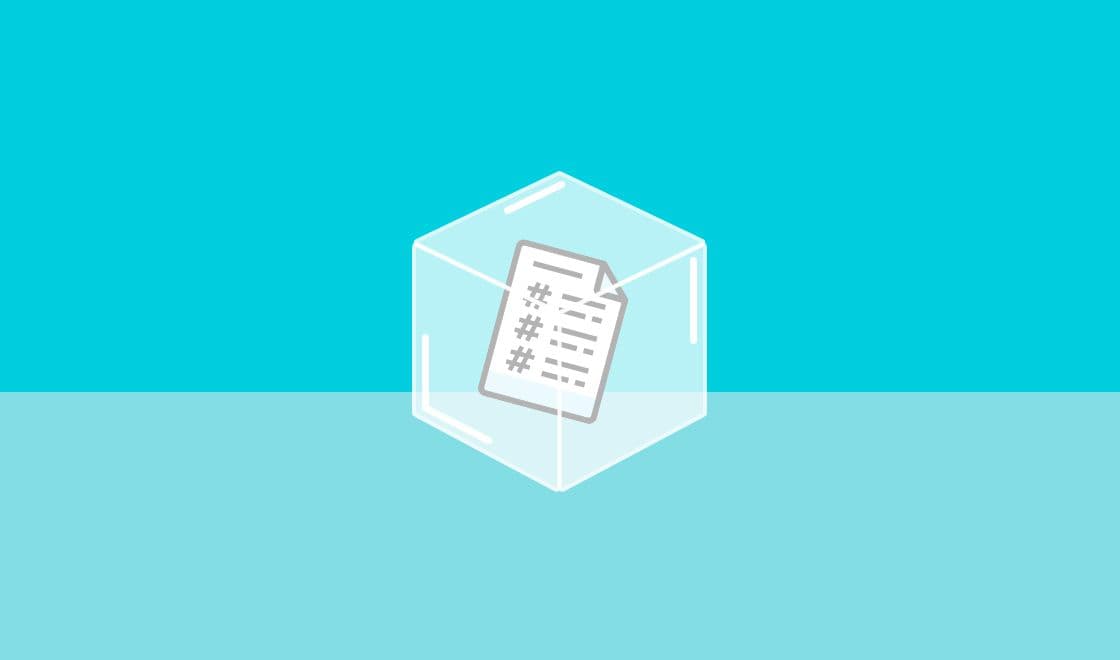
When we talk about “static data,” we’re describing the kinds of data that’s held by an application or website that has only a low understanding of a given user’s exact physical location and doesn’t have access to GPS. That is, the most elementary form of capturing physical context. Mailing addresses. Zip codes. User-inputted city or country values.
Because static location data only updates when a given users manually adjusts it on their preferences or profiles, the ceiling for using this kind of information to deliver brilliant experiences to your customers is, well, pretty low. At best, you can use this information to segment the messages you send, in order to reduce the changes that you’re delivering irrelevant outreach. (For instance, sending me events in New York based on my shipping address, or American holiday campaigns based on my preferred language.) For anything more advanced, however, you’ll need to look elsewhere.
Foreground Data
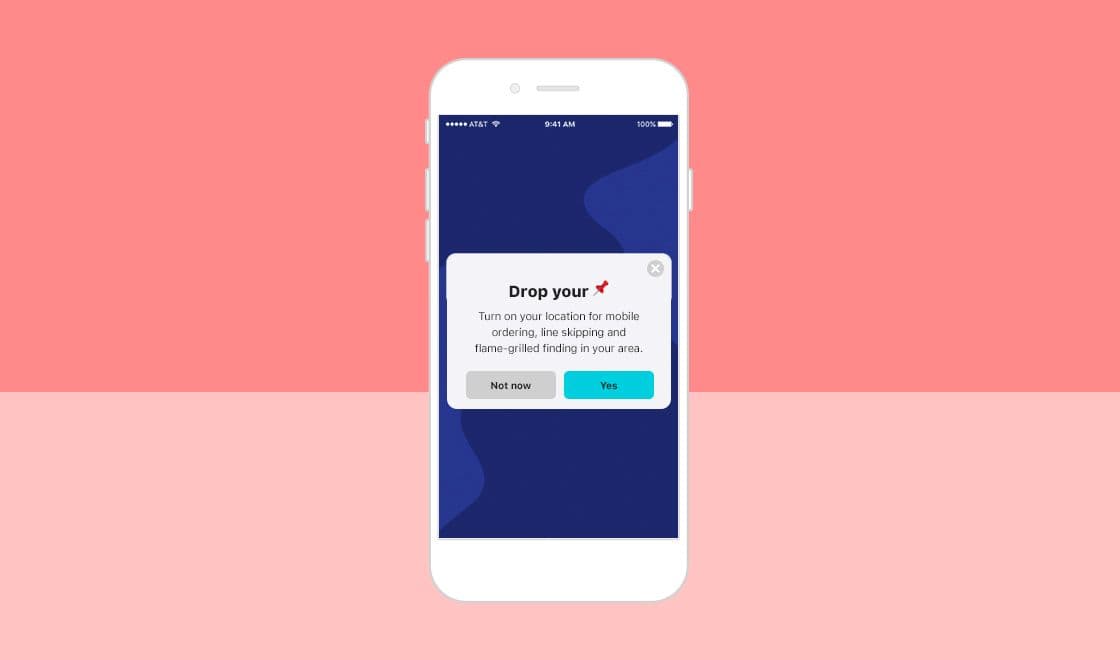
This kind of location data is very much a product of the mobile age and might be the sort of data that you think of when you think of location data. Foreground data is retrieved and updated whenever your app is open (or “foregrounded”) on a user’s device, and tends to be gathered via GPS or Wi-Fi.
In fact, the odds are good that you—yes, you—have an app on your phone right now that’s capturing this kind of data. If you’ve used any app that’s dependent on understanding their customers’ locations in order to function effectively (for example, a food delivery service, a mapping/directions app, or a ride-sharing service), you’ve probably been prompted to grant access to this kind of location data.
Foreground location data is generally a big improvement over static data, because it provides a more specific, defined view of each user’s location that will be updated on an ongoing basis. That ability to continually reference a user’s last “live” location touchpoint gives brands ways to more intelligently segment and reach their audience in connection with events, sales, or other location-specific communications. (So if you want to send a promotional on National Donut Day that highlights Los Angeles donut shops to people living in LA, you can.)
Tracking customer information is always a little fraught, since it can feel invasive to people if you’re not thoughtful about how you do it. Much like when you’re asking users if you can send them push notifications, it makes sense to prompt them with a value proposition that makes it clear WHY it benefits them to say yes. If you can explain how agreeing will improve their experience, you’re more likely to get the answer you want—and that transparency can do a lot to support your relationship with that customer.
Background Data
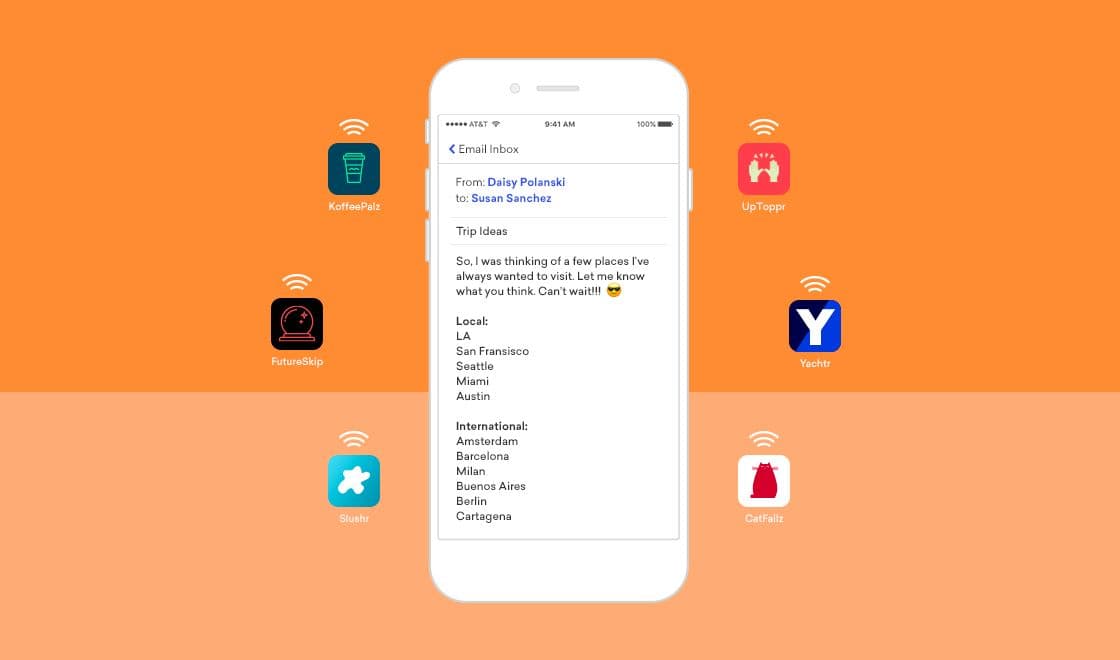
This third kind of location data makes it possible to support the actual triggering of messages based on real-time user movements, which can be incredibly impactful if done right—and downright creepy, if not.
When an app collects information on a user’s location in background, it’s essentially keeping tabs on that individual and their movements, whether they’re actively using the app or not. That means that background data offers all the insights that foreground data does, but also fills in the gaps when a user isn’t in the middle of an active session. This is the most consistent form of real-time location data that marketers have access to—and therefore tends to be what’s used to trigger relevant engagement for users associated with movement in and out of designated locations. Sometimes those locations are defined digitally using geofences; other times, physical devices like beacons are used to do similar work on a smaller scale.
Just like foreground data, background data access requires brands to get their users’ permission—and if any part of you is annoyed by that, it might be wise to think about about how your marketing is actually making your customers feel. What you’re asking for is a level of information a given consumer’s movements that they understandably might be reluctant to give; the least you can do is give them some thoughtful context about why you need this information. Generally, you should only be asking for this level of information if the product or service you provide would genuinely be able to provide a better, more relevant customer experience with it.
Are most people willing to share that kind of location data?
Many are, but definitely not all. The Pew Research Center has found that while up to 83% of app users see location data as critical to their mobile experience, about 40% of people are reluctant to share that kind of information with brands.
This stuff can be sensitive—and that means that even mediocre executions of location marketing can be off-putting to the people being targeted. Your users are putting a lot of trust in you when they share their location information; it’s important to live up to that trust by using the information at your disposal to make their experience palpably better. If you can’t make a credible case for how you’ll do that to your users, that’s probably a sign that you should hold off asking for nuanced location data.
Wait, so you’re saying I shouldn’t take advantage of location marketing?
Here’s the thing: location data is valuable, but it’s just one of many data sources that can enrich your engagement strategy. Before you go all in on location marketing, it’s best to think through what data you really need to accomplish specific goals—for instance, providing more relevant messaging, or driving stronger engagement—and focus on testing out whether location data can help you move the needle and provide a better customer experience.
Just because a research paper says that messaging triggered by geofences is impactful doesn’t mean that every one of your campaigns can or should leverage this tool; in fact, doing that might well alienate some of your customers. (After all, who wants to receive a campaign every time you enter or leave somewhere?) If it isn’t crucial for your business, think twice. By weeding out low-impact or tactless location marketing campaigns from your repertoire, you can refocus your energy on leveraging location in ways that are meaningful to your goals and speak to your customers and their needs.
Can you maybe… give an example of what that might look like?
Sure. One key to making the best use of location marketing is to think of it as a type of personalization—which, after all, it is—and take the same approach to leveraging location data that you might to any other information that supports this kind of message customization.
Today’s consumers increasingly expect the interactions they have with the brands they patronize to be personalized and relevant to their unique preferences and behavior. That can be as simple as templating in a user’s first name into a push notification or their last viewed item into the subject line of an email; however, it can also mean sending a triggered message to a highly targeted segment of super-users when they pass on of your brand’s brick and mortar locations. Ultimately, what makes these tactics work is that they fit the experience the brand is providing to the people receiving them.
At Braze, we’ve seen how location marketing can move the needle for clients by allowing them to understand and serve their customers better. In one memorable case, Urban Outfitters drove an increase of nearly 150% in average revenue per recipient by leveraging location data to better identify members of their audience who would be interested in a given campaign. Ultimately, what powers these kinds of brilliant experiences is the ability to seamlessly orchestrate and action off of accurate, relevant user data.
Anything else?
Just this: as much as it might seem like it, sometimes, nobody lives their whole life online. Understanding your customers’ locations and what they mean about who they are as individuals and what they value is a powerful way to personalize and improve the messages you send—as long as you’re transparent about what you’re doing, and thoughtful about when and how you take advantage of the location data your disposal.
Related Tags
Be Absolutely Engaging.™
Sign up for regular updates from Braze.
Related Content
View the Blog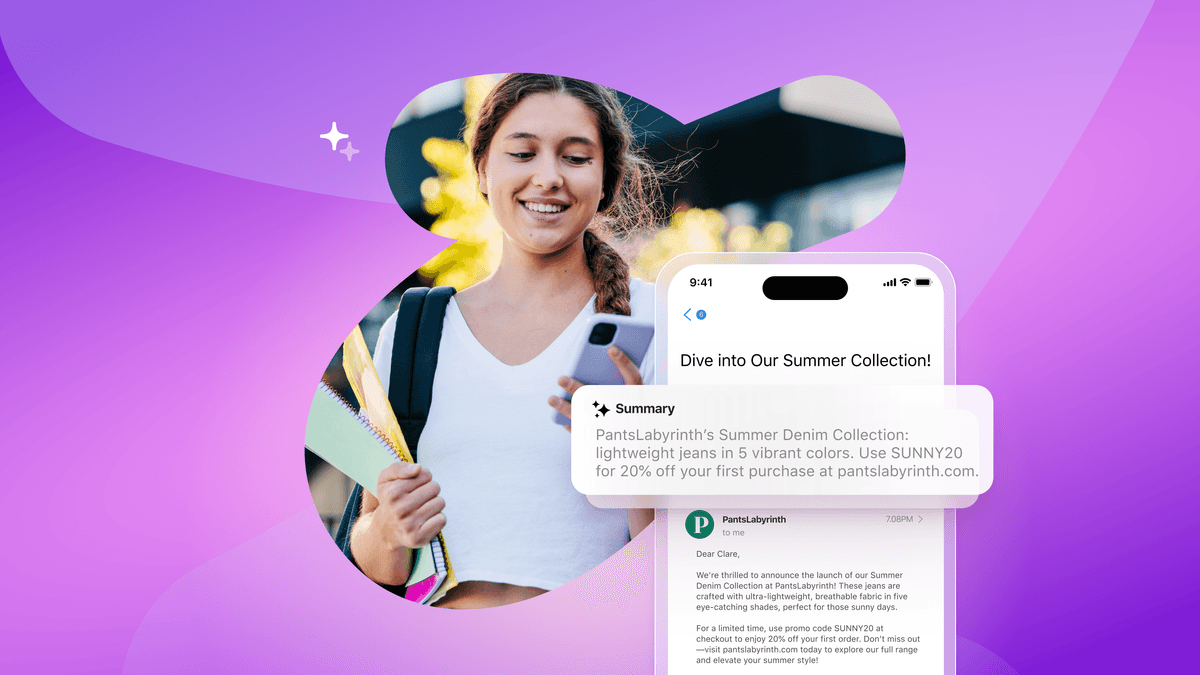
How Android 16 and iOS 26 are reshaping customer engagement

Haley Trost
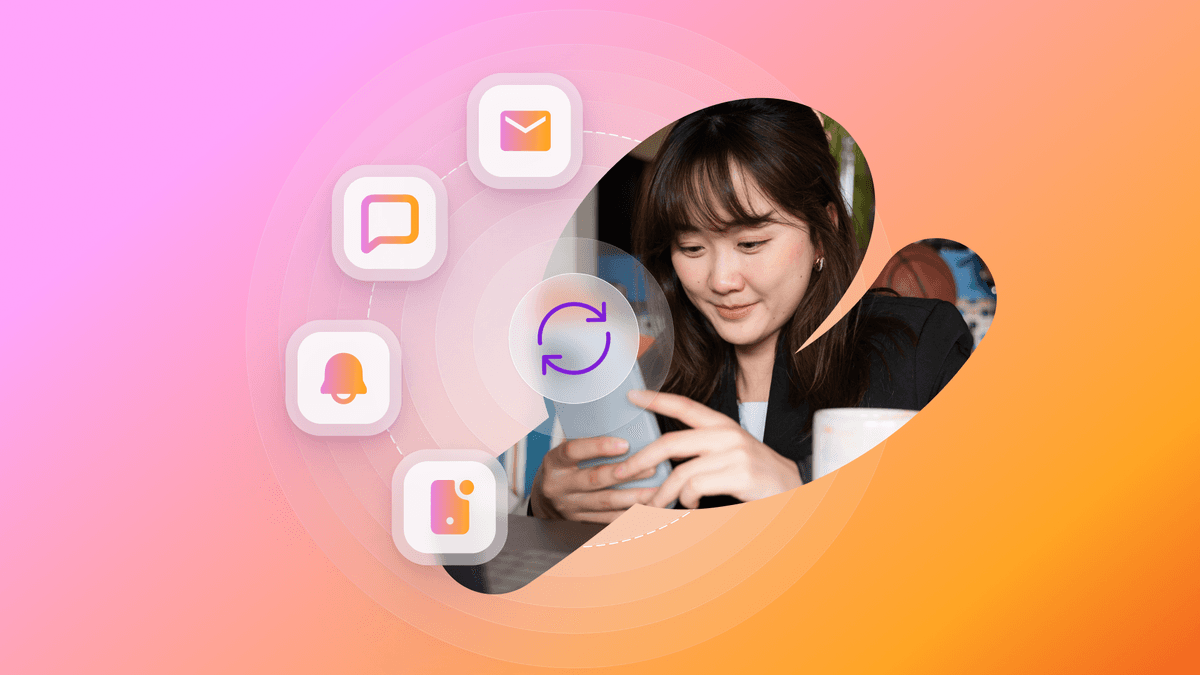
Proven customer retention strategies for building loyalty and reducing churn
July 02, 2025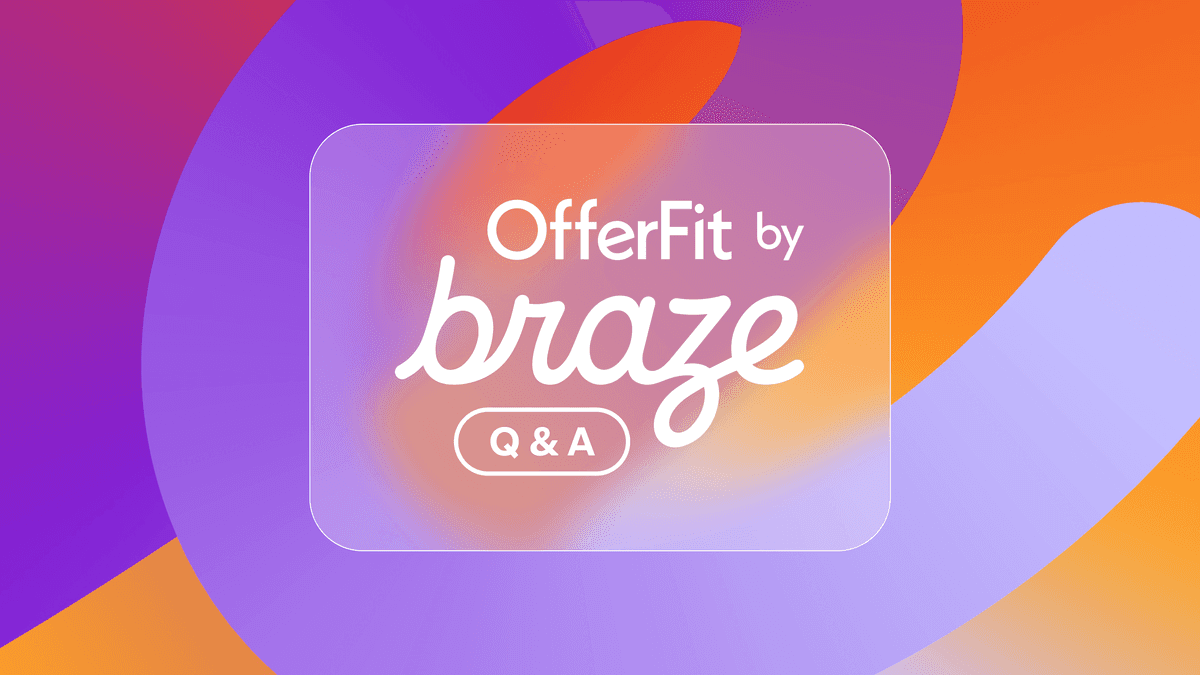
Introducing OfferFit by Braze: Answering burning questions
